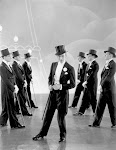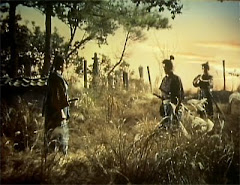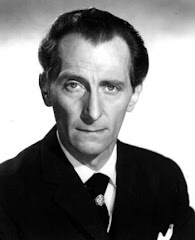
Monday, December 24, 2007
Wednesday, December 12, 2007
Friday, December 07, 2007
Thursday, December 06, 2007
Our Friend the Atom (1957)
NOTE: The following is not a review. I just started getting screen grabs and got carried away. Nobody teaches science better than Disney. Schools would be well-served to show this gem to science classes anywhere from Jr. High to college survey courses. The optimism Disney had for the prospects of nuclear energy is pretty rare today, but is refreshing. Incidentally, if you have a hankering to see the film and want to be surprised, be forewarned that this post is one big long spoiler!
 Disney animation shines brilliantly in documentaries. This work from Disney's imagineers, a 1957 introduction to the atom found in the Tomorrow Land volume of the Disney Treasures series, is one of the finest examples of their documentary output. It was a joint venture between General Dynamics and the U.S. Navy aimed at generating some positive buzz about nuclear energy in wake of the U.S.S. Nautilus, the first nuclear submarine, launched just two years before, and the larger wake of Hiroshima and Nagasaki. The inclusion of Walt Disney was a natural choice. During the war, Disney Studios perfected the art of the animated documentary with a series of government propaganda efforts as well as an independently produced feature-length documentary for long range airpower (all found in another volume in the Disney Treasures series, On the Frontlines). Walt Disney had a crack imagineer department and was just the type of ambitious multi-media presenter to tackle this type of subject matter (atoms). If there is any doubt that he wasn't just trying to get some of that fat government money with the project, just look at Walt behind this beautiful model of the Nautilus (either one) and say that he isn't a kid in a candy story when he explains the aim and scope of the film.
Disney animation shines brilliantly in documentaries. This work from Disney's imagineers, a 1957 introduction to the atom found in the Tomorrow Land volume of the Disney Treasures series, is one of the finest examples of their documentary output. It was a joint venture between General Dynamics and the U.S. Navy aimed at generating some positive buzz about nuclear energy in wake of the U.S.S. Nautilus, the first nuclear submarine, launched just two years before, and the larger wake of Hiroshima and Nagasaki. The inclusion of Walt Disney was a natural choice. During the war, Disney Studios perfected the art of the animated documentary with a series of government propaganda efforts as well as an independently produced feature-length documentary for long range airpower (all found in another volume in the Disney Treasures series, On the Frontlines). Walt Disney had a crack imagineer department and was just the type of ambitious multi-media presenter to tackle this type of subject matter (atoms). If there is any doubt that he wasn't just trying to get some of that fat government money with the project, just look at Walt behind this beautiful model of the Nautilus (either one) and say that he isn't a kid in a candy story when he explains the aim and scope of the film. Disney beams over the prospects of the nuclear energy and nuclear science. You can hear the smile in his voice as he marvels on the incredible nature of atoms and the great promises they have in store for man.
Disney beams over the prospects of the nuclear energy and nuclear science. You can hear the smile in his voice as he marvels on the incredible nature of atoms and the great promises they have in store for man. "We felt it was so important," he says, regarding the understanding of the atom, "that we embarked upon several atomic projects. For one: we've made plans to build an exhibit at Disneyland that will show you atomic energy in action":
"We felt it was so important," he says, regarding the understanding of the atom, "that we embarked upon several atomic projects. For one: we've made plans to build an exhibit at Disneyland that will show you atomic energy in action": Not something you're likely to see in Tomorrowland anytime soon, but certainly an ambitious imagination lies behind it.
Not something you're likely to see in Tomorrowland anytime soon, but certainly an ambitious imagination lies behind it.Walt goes on to lay out the studio projects, which are twofold with the film and a book:
 "As you can see," Walt says, "we found ourselves deep in the field of nuclear physics."
"As you can see," Walt says, "we found ourselves deep in the field of nuclear physics." "Of course, we don't pretend to be scientists - we're story tellers....so we combined the tools of our trade with the knowledge of experts. We added a nationally known scientist to our staff to head our new science department. His first assignment was to write the book of the atom and to help us in developing this program..."
"Of course, we don't pretend to be scientists - we're story tellers....so we combined the tools of our trade with the knowledge of experts. We added a nationally known scientist to our staff to head our new science department. His first assignment was to write the book of the atom and to help us in developing this program..." Thus, we are introduced to Dr. Heinz Haber, who goes on to tell us the story of the atom.
Thus, we are introduced to Dr. Heinz Haber, who goes on to tell us the story of the atom. Dr. Haber first relates a tale from Arabian Nights of the fisherman and the genie. By Haber's telling, the tale's themes and lessons echo that of the discovery of atomic energy and crystalize the overall thesis of the film. Who better to characterize the awesome and terrifying power of the atom through the personification of the genie than Disney's animators? The first thing the genie does upon being released from his bottle is vow the destruction of his releaser, the infinitesimal little fisherman.
Dr. Haber first relates a tale from Arabian Nights of the fisherman and the genie. By Haber's telling, the tale's themes and lessons echo that of the discovery of atomic energy and crystalize the overall thesis of the film. Who better to characterize the awesome and terrifying power of the atom through the personification of the genie than Disney's animators? The first thing the genie does upon being released from his bottle is vow the destruction of his releaser, the infinitesimal little fisherman. "Know that presently thou wilt have to die!":
 But man is more cunning than a genie, and our poor fisherman, through hook and crook, turns the threatening power into a pussycat that will do his bidding.
But man is more cunning than a genie, and our poor fisherman, through hook and crook, turns the threatening power into a pussycat that will do his bidding. Want to know how the fisherman does it? Read Arabian Nights or watch the film.
Want to know how the fisherman does it? Read Arabian Nights or watch the film.Dr. Haber: "Strangely enough, our story is like that fable come true through science. For centuries, we have been casting our net into the sea of the great unknown in search of knowledge. And finally we found a vessel. And like the one in the fable, it contains a genie. A genie hidden in the atoms of the metal, uranium.":
 "So this is our story. How the vessel was discovered, how the genie was liberated, how he first threatened to kill, and how he was finally harnessed to grant us three wishes."
"So this is our story. How the vessel was discovered, how the genie was liberated, how he first threatened to kill, and how he was finally harnessed to grant us three wishes."To explain it all, Haber assumes the standard and effective Disney tactic of teaching a topic by going through its history, starting back when man believed there were 4 basic elements: Fire, Air, Water and Earth. Greece in 400 BC.
 Democritus thought that the four elements could be broken down into small indivisible particles he called atomos. Again, the Disney animators provide just the right visual style to express his ideas as his voice explains:
Democritus thought that the four elements could be broken down into small indivisible particles he called atomos. Again, the Disney animators provide just the right visual style to express his ideas as his voice explains:"I crumble this Earth to soil:
 "and, in turn, crumble this soil to dust.
"and, in turn, crumble this soil to dust. "Now, if I could reduce this dust into its smallest particles....
"Now, if I could reduce this dust into its smallest particles.... "these would be atoms.
"these would be atoms. "If with think of grains of sand as atoms and pack them together, they can be molded into any desired form. So it is in this way that nature uses tiny particles, these atoms, to build all things: the Earth, water, air and fire."
"If with think of grains of sand as atoms and pack them together, they can be molded into any desired form. So it is in this way that nature uses tiny particles, these atoms, to build all things: the Earth, water, air and fire." A pretty good bit of thinking, right? Enter Aristotle:
A pretty good bit of thinking, right? Enter Aristotle: "If air and fire consist of small particles, how can they rise? They would fall to the Earth like a shower of pebbles."
"If air and fire consist of small particles, how can they rise? They would fall to the Earth like a shower of pebbles." The animators give us another brilliant progression, as the narrative explains that Aristotle's philosophies shaped the thinking of man for the next couple millennia and the idea of the atom was therefore lost. The column says it all:
The animators give us another brilliant progression, as the narrative explains that Aristotle's philosophies shaped the thinking of man for the next couple millennia and the idea of the atom was therefore lost. The column says it all:


 Which takes us to the 17th century when "man went beyond mere thinking. He began to act. His philosophy became 'seeing is believing.'
Which takes us to the 17th century when "man went beyond mere thinking. He began to act. His philosophy became 'seeing is believing.'
 The microscope: "It opened up an entirely new and tiny world for man to explore. It was a world full of strange patterns and designs. "Man found them in ordinary things such as wood."
The microscope: "It opened up an entirely new and tiny world for man to explore. It was a world full of strange patterns and designs. "Man found them in ordinary things such as wood." "In the feathers of birds."
"In the feathers of birds." "The microscope reveals infinite details in everything."
"The microscope reveals infinite details in everything." (cue soft instrumental rendition of "When You Wish Upon a Star" to capture the promise of science and imagination.) With the microscope, man discovered all sorts of single cell creatures, as well as the regular forms of crystals.
(cue soft instrumental rendition of "When You Wish Upon a Star" to capture the promise of science and imagination.) With the microscope, man discovered all sorts of single cell creatures, as well as the regular forms of crystals. Although the microscope wasn't able to show atoms, it made man aware that the tiny stuff he did see was made up of tinier stuff.
Although the microscope wasn't able to show atoms, it made man aware that the tiny stuff he did see was made up of tinier stuff.Again, a series of progressions convey the different scopes of matter. Here we have linked crystals of the element copper.
 Those crystals progress into a version of copper we are all familiar with:
Those crystals progress into a version of copper we are all familiar with:
 John Dalton, an English chemist, believed Democritus was right about atoms and came with the idea of mixtures of elements to form common substances.
John Dalton, an English chemist, believed Democritus was right about atoms and came with the idea of mixtures of elements to form common substances. That looks like sulfur oxide, a pollutant in acid rain. The story of atoms advances to the early 19th century and the Italian chemist Amadeo Avagadro who came expanded the idea of mixtures and came up with the idea of molecules.
That looks like sulfur oxide, a pollutant in acid rain. The story of atoms advances to the early 19th century and the Italian chemist Amadeo Avagadro who came expanded the idea of mixtures and came up with the idea of molecules.Although microscopes were unable to directly see atoms and molecules, observers learned a lot about them by what they could see, such as dust particles in a sample of water being kicked around by the busy water molecules.
 Atoms are always moving. In another striking visualization, Haber shows how molecules move faster and change states when heated. Here we have a burner under some water being turned to steam. The animation highlights over-sized atoms to display the differences between water molecules as ice, cold water, boiling water and steam - all in couple of seconds.
Atoms are always moving. In another striking visualization, Haber shows how molecules move faster and change states when heated. Here we have a burner under some water being turned to steam. The animation highlights over-sized atoms to display the differences between water molecules as ice, cold water, boiling water and steam - all in couple of seconds. And by superimposing a piston on the demonstration, we see how steam power is generated:
And by superimposing a piston on the demonstration, we see how steam power is generated:
 "There is power in steam. Power to do much more than lift a lid."
"There is power in steam. Power to do much more than lift a lid." A montage shows how steam power was applied to real world uses.
A montage shows how steam power was applied to real world uses. As Dr. Haber explains, steam was a powerful but hungry servant that had to be fed constantly. Man had still not found the genie.
As Dr. Haber explains, steam was a powerful but hungry servant that had to be fed constantly. Man had still not found the genie. The vessel was found in 1896 when a French scientist, Henry Becquerel:
The vessel was found in 1896 when a French scientist, Henry Becquerel: "Today, I discovered something very strange. I happened to leave a piece of uranium on a wrapped photographic plate in a dark drawer.
 Becquerel: "When I developed the plate, I found that it was fogged. Apparently, the uranium had exposed it even in the darkness and through the wrapping. This uranium...it seems to possess some mysterious activity and give off some type of radiation all by itself. C'est extraordinaire!"
Becquerel: "When I developed the plate, I found that it was fogged. Apparently, the uranium had exposed it even in the darkness and through the wrapping. This uranium...it seems to possess some mysterious activity and give off some type of radiation all by itself. C'est extraordinaire!" Two other French scientists, Pierre & Marie Curie, sought the source of this radiation in uranium and discovered a new element the produced stronger visible radiation:
Two other French scientists, Pierre & Marie Curie, sought the source of this radiation in uranium and discovered a new element the produced stronger visible radiation: Marie Curie: "Look! Our new element. How radiant it is. It even glows in the dark. We should call it radium."
Marie Curie: "Look! Our new element. How radiant it is. It even glows in the dark. We should call it radium." Haber: "Radium turned out to be a mysterious source of energy. This was against all laws of science known at that time. How could this tiny mass contain so much energy?"
Haber: "Radium turned out to be a mysterious source of energy. This was against all laws of science known at that time. How could this tiny mass contain so much energy?" It was finally understood in 1905 by Einstein, who determined every mass had a tremendous amount of energy.
It was finally understood in 1905 by Einstein, who determined every mass had a tremendous amount of energy. "Evidently, the atom was not an indestructible little ball after all."
"Evidently, the atom was not an indestructible little ball after all."
It was finally understood in 1905 by Einstein, who determined every mass had a tremendous amount of energy. In 1911, Lord Ernest Rutherford of England developed this contraption: a bit of uranium is in the lead block on the left. The small aperture makes it a little cannon, firing neutrons through the gold sheet in the middle and onto a fluorescent screen which makes them visible. That the neutrons straight through the gold sheet, only occasionally being ricocheted, told Rutherford that matter was mostly empty space, with a tiny nucleus in its center.
In 1911, Lord Ernest Rutherford of England developed this contraption: a bit of uranium is in the lead block on the left. The small aperture makes it a little cannon, firing neutrons through the gold sheet in the middle and onto a fluorescent screen which makes them visible. That the neutrons straight through the gold sheet, only occasionally being ricocheted, told Rutherford that matter was mostly empty space, with a tiny nucleus in its center.
 Rutherford's discovery of the nucleus helped scientist to understand how nature builds her atom.
Rutherford's discovery of the nucleus helped scientist to understand how nature builds her atom.
Carbon.
Gold.
Uranium.
 When the nucleus gets so big and crowded, it becomes unstable, as it does in uranium, and it shoots off a neutron.
When the nucleus gets so big and crowded, it becomes unstable, as it does in uranium, and it shoots off a neutron.
In Berlin, 1938, Otto Hanz and Fritz Straussman were the first to split an atom - thus opening the vessel: When man finally split an atom, he found that the neutron he used as a bullet produced two more neutrons, which produced two more each, so on an so forth. The atomic chain reaction.
When man finally split an atom, he found that the neutron he used as a bullet produced two more neutrons, which produced two more each, so on an so forth. The atomic chain reaction. In one of the more clever demonstrations, Haber throws a ping pong ball on a table of mouse traps, each with two ping pong balls, to show how the chain reaction grows exponentially.
In one of the more clever demonstrations, Haber throws a ping pong ball on a table of mouse traps, each with two ping pong balls, to show how the chain reaction grows exponentially.

 And in case you miss the larger point, Disney connects the dots.
And in case you miss the larger point, Disney connects the dots. And brings us back to the genie in the bottle them.
And brings us back to the genie in the bottle them. To use atomic energy for constructive purposes, the chain reaction had to be slowed down to useful limits. Thus we have the atomic reactor:
To use atomic energy for constructive purposes, the chain reaction had to be slowed down to useful limits. Thus we have the atomic reactor: It's basically a furnace with thick concrete walls to contain the fire.
It's basically a furnace with thick concrete walls to contain the fire. Blocks of uranium (the 4 light orange images in the furnace) serve as the fuel. To slow the chain reaction down, lead rods are inserted through the 3 holes up top.
Blocks of uranium (the 4 light orange images in the furnace) serve as the fuel. To slow the chain reaction down, lead rods are inserted through the 3 holes up top. These rods absorb the shooting neutrons and take many of them out of play.
These rods absorb the shooting neutrons and take many of them out of play.
 Water is pumped in and steam is produced, which can then be converted into electricity.
Water is pumped in and steam is produced, which can then be converted into electricity.
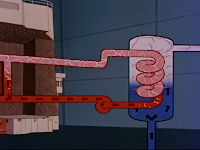 Not only can the furnace make power, it can artificially make any substance radioactive, such as this piece of metal.
Not only can the furnace make power, it can artificially make any substance radioactive, such as this piece of metal. The genie is out and will do our bidding. What should we wish for?
The genie is out and will do our bidding. What should we wish for? The first wish Haber proposes is for power to run our cities...
The first wish Haber proposes is for power to run our cities... to propel our ships....
to propel our ships.... and subs...
and subs... and planes and rockets...
and planes and rockets... The coal and oil (the two trains headed into the power plant) can now be put to better uses - for plastics & textiles and dyes and drugs. It's refreshing to hear that coal and oil should still be exploited instead of simply left in the ground. But I digress.
The coal and oil (the two trains headed into the power plant) can now be put to better uses - for plastics & textiles and dyes and drugs. It's refreshing to hear that coal and oil should still be exploited instead of simply left in the ground. But I digress. Since radioactivity produces a distinct signature, it is ideal for tracing - making a needle in a haystack easy to find:
Since radioactivity produces a distinct signature, it is ideal for tracing - making a needle in a haystack easy to find:

 So the second wish should be for food and health. Radioactive particles can be used to trace how nutrients are absorbed in plants. This will help us grow bigger and better crops for a hungry population.
So the second wish should be for food and health. Radioactive particles can be used to trace how nutrients are absorbed in plants. This will help us grow bigger and better crops for a hungry population.
 And it can be used, cough, on livestock as well...
And it can be used, cough, on livestock as well...
 So that's the food part - bountiful harvests...
So that's the food part - bountiful harvests... For health, we have atomic medicine. Radioactive sodium can be used to track the flow of blood to the heart:
For health, we have atomic medicine. Radioactive sodium can be used to track the flow of blood to the heart:
 An atomic cocktail can be used to locate and analyze thyroids.
An atomic cocktail can be used to locate and analyze thyroids. And radioactive cobalt can be used to fight cancer.
And radioactive cobalt can be used to fight cancer. By combining food and health, Haber leaves himself one last wish, which he cautiously uses to wish that the atom stay forever our friend.
By combining food and health, Haber leaves himself one last wish, which he cautiously uses to wish that the atom stay forever our friend. I'm thinking we need to have the genie step it up and create some more power plants.
I'm thinking we need to have the genie step it up and create some more power plants.


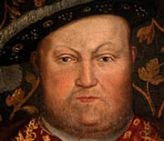
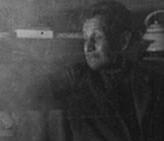
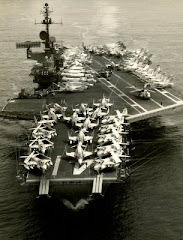
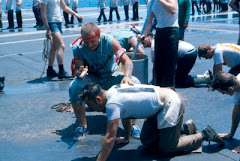

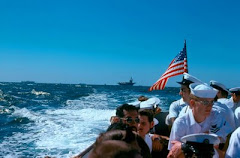
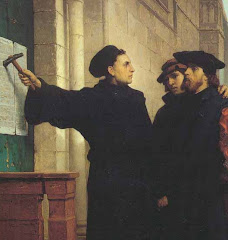
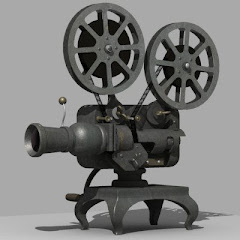
.jpg)
